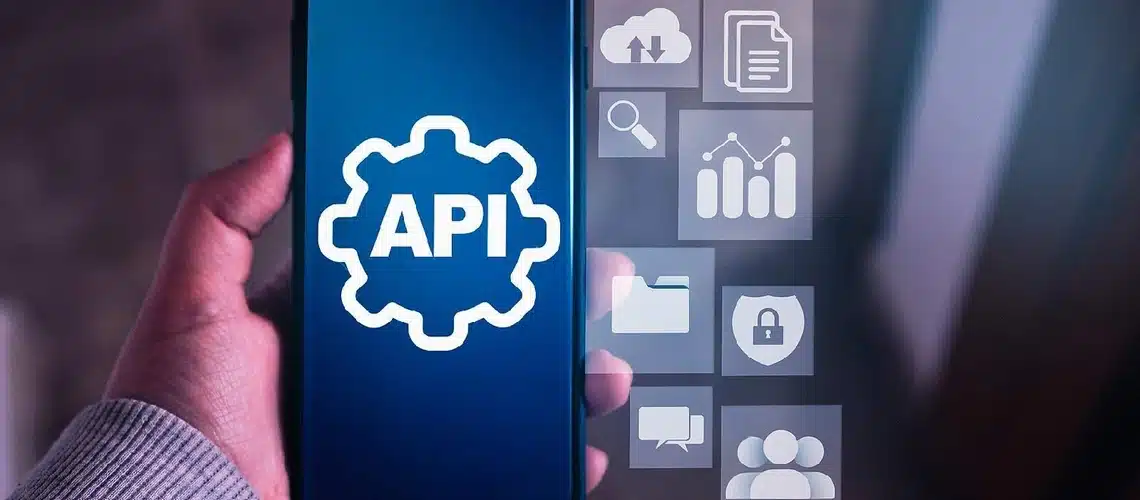10 Examples of APIs Bridging the Gap Between Systems

Discover how APIs facilitate seamless integration between systems. Explore 10 practical examples that demonstrate the power of APIs in bridging technological gaps.

Join 2000+ tech leaders
A digest from our CEO on technology, talent and hard truth. Get it straight to your inbox every two weeks.
No SPAM. Unsubscribe anytime.
Today, we’re diving deep into the realm of integration, showcasing real-world examples of APIs that have successfully bridged the gap between systems, enabling data exchange and streamlining processes. These examples demonstrate the transformative power of APIs and their vital role in the digital landscape. So, whether you’re an API enthusiast, a developer, or just curious about what these tools can do, keep reading and prepare to be inspired by the possibilities that lie ahead.
“The art of progress is to preserve order amid change and to preserve change amid order.” – Alfred North Whitehead
What Is An API?
An API, or Application Programming Interface, is essentially a set of protocols and tools that allows different software systems to communicate and exchange data with each other. It acts as a sort of intermediary between two different systems, allowing them to interact and share information in a way that is both efficient and secure. In other words, it is like a messenger that helps two different systems understand each other and work together.

What Are APIs Used For?
APIs are used for a wide variety of purposes, but they are most commonly used to help different software systems talk to each other and exchange information. For example, if you have ever used a third-party app that interacts with another service, like a social media platform, chances are that you have used an API without even realizing it. APIs can also be used to help automate processes, like data entry or report generation, by allowing different systems to work together seamlessly. In addition, APIs are often used by developers to create new applications or services, as they provide a way to leverage existing technology and infrastructure without having to start from scratch.
10 Examples of APIs
1. Google Maps
Google Maps API allows developers to integrate Google Maps features into their applications, websites, or tools. By using this API, developers can add maps, location search, and route directions to their projects. The API provides various services like Geocoding, Directions, Places, Maps JavaScript, and Distance Matrix. It allows customization of the map’s appearance, including markers, overlays, and other visual elements. The API supports various platforms, including Android, iOS, and Web applications, making it a popular choice for location-based services.
2. Stripe
Stripe API is a payment processing API designed to simplify online transactions for developers. It allows developers to integrate various payment options, including credit cards, digital wallets, and ACH transfers, into their websites or applications. The API supports multiple languages, including Python, Ruby, PHP, Java, and JavaScript. It also provides robust security features, such as tokenization and encryption, to ensure the safety of sensitive customer data. The API follows RESTful principles and uses standard HTTP methods to create, read, update, and delete resources.
3. OpenAI
OpenAI API provides developers with access to OpenAI’s powerful AI models, like GPT-4, to enhance their applications with advanced natural language processing capabilities. Using this API, developers can perform tasks such as text generation, summarization, translation, sentiment analysis, and more. The API allows developers to send a prompt to the model and receive a generated response based on the context and instructions provided. The API uses RESTful principles and supports JSON format for data exchange.
4. Twilio
Twilio API is a cloud-based communication platform that enables developers to add voice, SMS, chat, and video capabilities to their applications. Twilio offers various APIs, such as Programmable Voice, Programmable SMS, Programmable Video, and Programmable Chat, to handle different communication channels. The API supports multiple programming languages, including Python, Ruby, PHP, Java, and JavaScript, and provides SDKs for popular platforms like Android, iOS, and Web applications. Twilio’s API makes it easy for developers to build and scale communication services without the need for complex infrastructure or hardware.
5. Twitter
Twitter API enables developers to access and interact with Twitter data, such as tweets, user profiles, and trends. With this API, developers can create applications that perform various functions like posting tweets, searching for specific hashtags, streaming tweets in real-time, and analyzing tweet sentiment. The API offers RESTful endpoints, allowing developers to create, read, and update resources using standard HTTP methods. It also supports OAuth 1.0a for secure authentication and authorization.
6. Spotify
Spotify API, also known as Spotify Web API, allows developers to access and interact with Spotify’s extensive music catalog and user data. Using this API, developers can create applications that search for tracks, albums, and artists, retrieve playlist information, and manage user’s library and playlists. The API also provides access to audio features and analysis, such as tempo, key, and loudness. It follows RESTful principles and supports OAuth 2.0 for secure authentication and authorization.
7. Amazon S3
Amazon Simple Storage Service (S3) API enables developers to store, retrieve, and manage data in Amazon’s scalable and secure cloud storage infrastructure. The API allows developers to create, delete, and list buckets, as well as upload, download, and delete objects within those buckets. Amazon S3 provides high availability, durability, and performance, making it a popular choice for various use cases, such as backup, big data analytics, and content distribution. The API uses RESTful architecture and supports multiple SDKs for popular programming languages.
8. SendGrid
SendGrid API is an email delivery service that allows developers to integrate email functionality into their applications. With this API, developers can send transactional and marketing emails, manage contacts, and track email delivery and engagement metrics. SendGrid API supports various features, such as email templates, personalization, and scheduling, to create customized and targeted email campaigns. The API follows RESTful principles and supports multiple programming languages through its SDKs.
9. Slack
Slack API allows developers to build custom integrations and applications for the Slack platform. With this API, developers can create chatbots, automate workflows, and send notifications from external services to Slack channels or users. The API provides various methods, such as Web API, Events API, and Real-Time Messaging API (RTM), to interact with Slack’s functionalities. It uses OAuth 2.0 for authentication and supports multiple programming languages through its SDKs.
10. Skyscanner
Skyscanner API provides developers with access to Skyscanner’s travel search engine data, such as flight, hotel, and car rental information. With this API, developers can create applications that search for flights based on various parameters, retrieve flight pricing and availability, and access hotel and car rental data. The API enables the integration of travel search and booking functionalities into custom applications or services, such as travel planning tools or aggregator platforms. It follows RESTful principles, supports various response formats like JSON and XML, and requires API key-based authentication.
Typical Projects You Can Achieve with Echo
- Ongoing Platform Dev for Workflow Automation API
- API Integrations for SaaS Company
- QuickBooks API Dev for Bookkeeping Business
- API Development for Photo Printing App
- API Dev for VR Company
- Custom API Dev for Cloud Solutions Company
- Web API Integrations for Hotel Booking Company
Conclusion
As we’ve explored in these examples, APIs bridge the gap between disparate systems, streamlining processes, and fostering innovation. They empower developers to integrate different platforms and services, providing seamless experiences for end-users and businesses alike. As technology continues to evolve, we can expect APIs to play an even more critical role in shaping the future of communication, collaboration, and data exchange.
If you have an upcoming software project, it is almost certain that APIs and data integration will be significant factors in the dev process.
Share your requirements with us and we will connect you with the most suitable developers or team to bring your vision to life!
Tags: apis, bridging, communication, connectivity, data.



I can honestly say I had no idea what APIS were when I started reading your blog. In fact, while I was interested in checking it out, I didn’t expect to learn much (or perhaps anything). Instead, you did a terrific and effective job explaining things and how APIS are working behind the scenes with many of the apps we use every day.